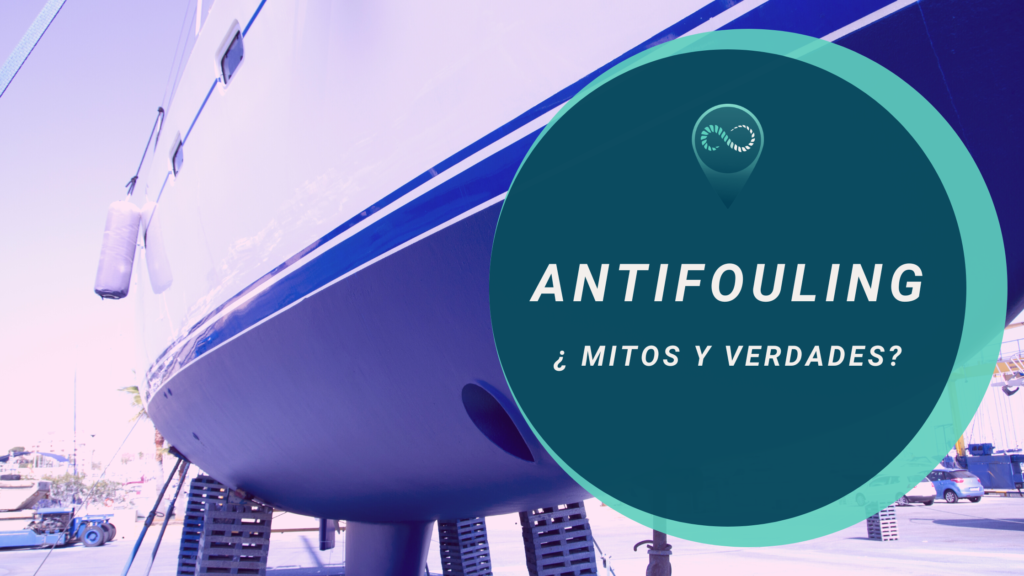If you are here you already know what antifouling is, therefore, let's go with questions that may be of interest to you.
-
- The antifouling comes off: what is it due to?
- Is it safe to clean your boat with fresh water after applying antifouling?
- Launching after applying antifouling: How long should you wait to launch your boat into the water?
- Sun and antifouling: friends or enemies?
- Should you paint the boat's anodes with antifouling?
- Should you paint your boat slide with antifouling?
- What antifouling is the best for the Mediterranean?
- Is it possible to apply the antifouling yourself or is it always recommended to hire a professional?
- How many layers of antifouling to apply after an osmosis treatment?
- Silicone Antifouling – Yes or No?
The antifouling, falls off!
Lack of paint adhesion can have a number of causes, and it can be difficult to determine if it is due to a paint incompatibility or another cause. However, if the lack of adhesion is suspected to be due to an incompatibility between different types of paint, there are some signs that may indicate this:
Paint Peeling or Flaking: If the paint begins to peel or peel after applying an additional coat of paint, it may indicate that there is a chemical incompatibility between the two coats of paint. This can occur when paint layers have different chemical properties or when they are applied under different environmental conditions.
Bubbles or blisters on the paint surface: If bubbles or blisters appear on the paint surface after application, this may indicate a chemical incompatibility between the paint layers. Bubbles can form due to the release of gases that occur when layers of paint contract and expand differently.
Changes in color or appearance: If a change in the color or appearance of the paint is observed after the application of an additional coat, this may indicate that the paint coats are not compatible. For example, if a glossy coat of paint is applied over a matte coat, the surface may become uneven or discolored.
If the lack of adhesion is suspected to be due to a paint incompatibility, it is best to remove all paint and start over with a fresh coat of paint suitable for the type of surface and application. In any case, it is important to always follow the paint manufacturer's recommendations and carry out prior tests to verify compatibility between different types of paint.
Is it safe to clean your boat with fresh water after applying antifouling?
After applying a coating of antifouling to a boat hull, it is important to follow the manufacturer's instructions and to avoid washing the hull with fresh water for the first few weeks after application.
Antifouling needs time to cure and dry properly, and fresh water can interfere with this process and affect antifouling effectiveness. Also, if the hull is washed with fresh water too soon after application, some of the antifouling may be removed, which may decrease its ability to protect the hull against the growth of marine organisms.
After the first few weeks, the hull can be washed with fresh water, but this must be done carefully and with a gentle rinse so as not to damage the surface of the antifouling. It is recommended to use a salt water solution to rinse the hull to remove dirt and mud without damaging the antifouling. If it is necessary to use fresh water to rinse the hull, it is recommended to do so sparingly and use only a minimal amount of fresh water.
How long should I wait before launching my boat after applying antifouling?
In general, most antifouling manufacturers recommend waiting at least 24 hours after applying the antifouling before putting the boat in the water. This gives the antifouling enough time to dry and cure properly before being exposed to water. After this period of time, the boat can be activated in seawater without problems.
Sun and antifouling: friends or enemies?
The length of time a freshly antifouled boat can spend in the sun after being activated with seawater will depend on several factors, including the type of antifouling used, weather conditions and sun exposure.
Regarding sun exposure, it is important to note that the sun can have a negative impact on the effectiveness of the antifouling over time. Prolonged exposure to the sun can cause antifouling to degrade and lose its antifouling properties. Therefore, it is recommended to store the boat in a place protected from direct sunlight whenever possible, especially during extended periods of time out of the water.
In general, many antifouling manufacturers recommend that a boat not be left dry for more than 30 days after antifouling has been applied. If the boat must be out of the water for a longer period of time, it is recommended to apply a layer of protective paint over the antifouling to protect it from exposure to air and sun.
In any case, it is important to follow the antifouling manufacturer's recommendations regarding the maximum time the boat should be dry to avoid damaging the antifouling and to maintain adequate protection against the growth of marine organisms.
All this information can be found in the data sheets of the painting.
Should the ship's anodes be painted with antifouling?
It is not recommended to paint the boat's anodes with antifouling. Anodes are pieces of metal designed to sacrifice their own corrosion to protect other metals in the ship's hull. If they are painted with antifouling, the paint could interfere with the ability of the anode to protect the hull of the boat and could decrease its useful life. Furthermore, antifouling is not effective in preventing corrosion on anodes, since its function is to prevent the growth of marine organisms. It is recommended to clean the anodes regularly and replace them when necessary.
Should the boat slide be painted?
It is not recommended to paint the boat slide with antifouling. The log is a speed measuring instrument found on the bottom of the ship's hull. If painted with antifouling, it may reduce the accuracy of velocity measurement and cause damage to the instrument. Also, antifouling is not necessary in this area, as marine organisms do not typically grow on the slide surface. If you want to protect this area, you can use other specific products for this purpose, such as waxes or lubricants that help prevent the accumulation of dirt and protect the surface from corrosion.
What antifouling is the best in the Mediterranean?
There are several brands and types of antifouling paints that can work well in the Mediterranean, as the choice will depend on factors such as the type of boat, the intended use and the local marine environment. Here are some options that may be suitable for the Mediterranean area:
-
- Hempel Hard Racing Xtra – This high resistance antifouling paint is suitable for all types of boats and can withstand a wide range of speeds and weather conditions.
-
- International Micron 350 – This self-polishing antifouling paint is suitable for high speed boats and offers excellent protection against the growth of marine organisms.
-
- Coppercoat – This copper antifouling paint is strong and durable, and can last up to 10 years with a single application.
-
- Nautix A4: This self-polishing antifouling paint is suitable for all types of boats and offers good protection against the growth of marine organisms.
It is important to remember that the choice of antifouling paint will depend on the specific conditions of the boat and the local marine environment, and it is recommended to consult with an antifouling paint specialist to determine the best option for your boat.
Is it possible to apply the antifouling yourself or is it always recommended to hire a professional?
The application of antifouling is a task that can be done by yourself if you follow the manufacturer's instructions and take the necessary precautions. However, if you do not have sufficient experience or knowledge, it is recommended to hire a professional to avoid errors that may jeopardize the effectiveness and durability of the product, as well as health and the environment. Additionally, in some cases, antifouling application may require special equipment and techniques that only a professional can provide.
If you do not have a trusted provider to carry out this work, we recommend that you request your budget through our APP GoodWinds where you can receive several budgets, review the evaluations of other clients and choose the best professional. Download the APP to Android either iOS. or directly ask for a budget.
How many layers of antifouling to apply after an osmosis treatment?
After an osmosis treatment, it is recommended to apply at least two layers of antifouling on the hull of the boat. The first coat should be applied evenly and allowed to dry completely before applying the second coat. It is important to ensure that the surface of the hull is clean and free of any debris before applying the first coat of antifouling. If desired, a third coat can be applied for added protection against marine fouling. However, it is important to note that applying too many coats can have the opposite effect and reduce the effectiveness of the antifouling. Consult a professional for specific recommendations on how many coats of antifouling to apply after a reverse osmosis treatment on your boat's hull.
If you want to know more about Osmosis→ we recommend you see our blog article on osmosis: Read more
Silicone Antifouling – Yes or No?
Silicone antifouling is one of the most popular types of antifouling due to its long-term durability and effectiveness in extreme saltwater and high-temperature conditions.
Silicone is a non-porous and waterproof material that does not allow the growth of marine organisms.
The duration of the industrial silicone antifouling can vary depending on factors such as the quality of the product, the conditions of navigation, the type of water and the frequency of use of the boat. However, it is generally recommended that silicone antifouling be replaced every 2 to 3 years to ensure adequate protection against the growth of marine organisms on the hull of the boat. It is important to follow the manufacturer's recommendations and carry out regular inspections of the hull to determine if a new layer of antifouling is necessary.
An example of a popular Silicone is HEMPEL SILICONE ONE which is known for its high performance and durability. This formula is resistant to rubbing and wear, making it an excellent choice for high-speed, heavy-duty boats.
Hempel recommends its silicone antifouling for boats operating in saline and freshwater waters, including recreational, fishing and commercial boats. It is also suitable for ships that stay in port for long periods of time and for ships that make long voyages.
You can find other major brands that also offer Silicone Antifouling such as:
-
- International Paint
-
- Jotun
-
- pettit
-
- sea hawk
-
- epiphanes
-
- Nautix
Thanks for reading our antifouling blog! We hope you have found useful and valuable information.
Always remember to follow the manufacturer's recommendations and take into account the specific conditions of your boat and sailing area when choosing and applying the right antifouling. Keeping your hull clean and in good condition is essential for the best performance and durability of your boat.
Enjoy your next adventure on the water with a clean and protected hull!







